INTRODUCTION
Political digital marketing provides an excellent opportunity for information technologies, as a tool for studying different target audiences, such as the behavior patterns of the electorate, based on data analysis. However, the correct use of a digital strategy in electoral processes can be complex, poorly documented, and poorly used. This prompted the research question of the study that identified the marketing tactics used by political candidate José María Figueres Olsen, through his profile within the Facebook social network, during the month of January, 2022.
To answer this question, an analysis of the digital marketing trends, used by the Partido Liberación Nacional in the profile @Figuerescr, within the social network Facebook, during the first round of the electoral campaign 2022, was proposed as an objective. The roadmap was as follows: 1) compile the marketing tactics used by the party in the brand recognition of the candidate with the electorate; 2) identify audience loyalty within the social network; 3) generate Buyer Persona profiles that would support the candidate from the results of the digital marketing strategy used; 4) perform a comparative analysis of the effectiveness achieved with the brand strategy versus votes obtained.
For this purpose, the publications made by the candidate in the profile @Figuerescr were compiled and analyzed, based on the characteristics of political digital marketing trends. The results obtained were compared with studies and opinion polls of organizations authorized by the Supreme Electoral Tribunal (TSE). This allowed us to identify trends and causes in the candidate's electoral campaign, and the relationship with the votes obtained in the first round. Besides identifying the characteristics of the audience, we obtained the voter profile to whom the candidate's digital marketing campaign was directed.
The research was of a causal type, since the audience had an active role vis-à-vis the media, thanks to digitalization. This allowed performing a cause-and-effect analysis on the reactions in the different profiles that followed the candidate's Facebook account. Additionally, the analysis of the different digital marketing tactics completed the basis of this research.
The profile of the PLN candidate José María Figueres Olsen was chosen for the following reasons: 1) he led the polls for the year 2021; 2) access to data on the financial investment in propaganda of the different parties was available, with the PLN candidate among the first parties on the investment list; 3) it was identified that the party made an economic and organic growth funding for publications in the candidate's profile and not so much so, in the party's profile, resulting in a tendency to focus on the candidate as a "product", this being the subject of the study; 4) the social network selected was Facebook, because it was the site where the candidate's profile had the largest number of followers, so that the sample was larger and the candidate's profile had the largest number of publications.
Also, although the electoral campaign began in October 2021, it was interrupted on several occasions and was affected by the political closure, which is why the period corresponding to January 2022 was chosen to conduct the proposed study.
According to data from Kantar IBOPE Media in the political campaign, candidates had invested approximately $1,569,158.56 in advertising messages, both in traditional and digital media. There was an increase of 36.16% compared to what was reported until December 31, 2021. José María Figueres Olsen remained as the candidate who had invested the most up to that point, with $414,998.18, which represented 26.4% of everything invested by all political parties (ULatina 2022).
Therefore, the study analyzed the tactics employed for each of the candidate's digital marketing objectives, based on the literature review related to the subject of the study; compiling the different trends in digital and strategic marketing, and generating this contribution to the state of the art.
Theoretical framework
With the emergence of digital transformation, the approach to marketing has greatly changed. (Marengo et al. 2021) identified it as the application of marketing strategies and techniques adapted and carried out through digital media, where technology and platforms such as websites, emails, mobile applications, forums, blogs and social networks allow a dynamic interaction with the customer. (Morris 2009) argued that digital marketing, like traditional marketing, share the objectives of generating recognition, acquisition, conversion and loyalty, the difference being the communication channels and tactics used.
(Nalbant and Aydin 2023) indicate that digital marketing focuses on brand recognition, attracting and building customer loyalty, but targeting a specific audience. This shows a potential consumer profile, giving room for the digital marketing model known as One to One, which personalizes actions according to the interests and habits of the consumer. Thanks to the widespread use of the Internet, this type of marketing has become a common and efficient practice (Jadhav, Gaikwad, and Bapat 2023).
Currently, there are different types of digital marketing. However, for the purposes of this study, we will refer only to the following areas: The first, Brand Recognition, allows the company, product, or service to position itself in the market, by identifying the consumer, in order to enter his mind, be remembered, and make an impact (Salim, Rosdian, and Marta 2021; Ribeiro, Oliveira, Laranjeira, and Arrais 2017; Karen and Zai 2022). Secondly, there is Engagement. (Pinheiro-Tiago and Cristóvão-Veríssimo 2014) describe it as the natural commitment that arises between a product or service (brand) and its respective consumers. (Habib, Hamadneh, and Hassan 2022) see it as the commitment established through solid and firm relationships over time. Finally, there is Customer Loyalty, where the objective is to retain customers so that they continue to purchase products and services, thanks to their positive experiences (Donio', Massari, and Passiante 2006).
(McMullan and Gilmore 2008) state that in order to achieve the expected success in a customer loyalty strategy, the degree of marketing personalization is important, since it allows developing prototypes of potential customers (Buyer Persona) through all the information that can be collected through digital platforms. (Akre et al. 2019) propose that a Buyer Persona profile is a semi-fictional representation of the ideal customers you want to attract, thus defining the target audience with greater accuracy. Therefore, without defining this profile, segmentation is not possible, because brands will target users with the characteristics selected in the profiles created at the beginning. Thus, these profiles are the only recipients of advertising (Lehnert, Goupil, and Brand 2021).
(Naeem 2019) highlights the increased use of social networks as part of the digital strategy, since it concentrates a large amount of customer data for analysis. (Xu et al. 2023) indicate that social networks are the second source of data search associated with online brands, the first source being Internet search engines. This is why the research was developed taking Facebook as a source of information. This network, at the time of the study, collected more than 58% of the total world population, being the media that recorded the highest amount of connected user time during 2021 (Rodríguez-Torrico, San-Martín, and San José Cabezudo 2020). This enabled the identification of digital marketing tactics in the profile of the PLN candidate, thereby providing an answer to our original research question.
(Leung et al. 2023) mention that Facebook is very flexible for different content formats, since it allows the user to share images, videos, moving or 360º images. It even uses ads within the same application, which facilitate audience segmentation, so as to generate a Buyer Persona profile.
However, in order to make proper use of the data obtained from social networks, it is necessary to establish a digital strategy. (Zekos 2003) mentions that digital technologies in business models can create new capabilities that differentiate the company, including a set of actions focused on achieving business objectives. These objectives must be formulated in the long term, which means that the tactics must consider the tools and their application. For example, a brand sets the goal of getting one hundred followers on Facebook within a period of one month. This could be achieved with different strategies and tactics, so that they work as follower attraction in this social network (Pereira-Correia, García-Medina, González-Romo, and Contreras-Espinosa 2014), as the most common strategies, documented in academia as follows:
First, there is inbound marketing, which attracts customers with useful, relevant content, while adding value at each stage of the buyer's journey (Moriuchi 2021). Then there is content marketing, a marketing technique that seeks to create, publish and share content of interest to the Buyer Persona (Visvizi, Troisi, Grimaldi, and Loia 2022). (He, Cai, Cai, and Zhang 2021) refer to a variant called social media content marketing. The difference is the development of content within a social platform, such as Facebook, Instagram, TikTok, SnapChat, etc. (Rialti, Kvítková, and Makovník 2023) mention referral marketing as the good experiences of the user with the brand. Here, customers talk to their acquaintances or share in their own social networks about the brand, turning prospects into new customers.
Once the digital strategy is defined, it must give way to the different tactics that allow implementing the digital marketing plan, as with storytelling. This is a tactic that allows narrating situations in a way that appeals to the emotions of the user (Brown 2020), as is the objective of the proposed study. Thus, a market trend is a behavior that at a certain time gains strength and stands out, to serve as a compass in the search for new opportunities, and to see if the product or service can be successful (Nguyen et al. 2021).
The first stage of the electoral campaign in Costa Rica in January 2022, was characterized by the use of three digital marketing tactics: 1) Video marketing, based on the use of videos within digital platforms, with an approximate duration of up to three minutes, together with an algorithm that only showed the user what he/she wants to see (Mulier, Slabbinck, and Vermeir 2021); 2) Influencer marketing, through the use of an influencer towards a community, to talk about brand products and recommend them to their followers (De Veirman, Cauberghe, and Hudders 2017) and 3) Live streaming, which allowed the brand to showcase its products and interact with users in real time (De Veirman, Cauberghe, and Hudders 2017).
We live in a world connected to the Internet twenty-four hours a day, where information travels at the speed of light and is increasingly accessible and abundant. In this context, the image of political candidates has been seriously affected and subjected to incessant public scrutiny. Between heaven, earth, and Facebook there is nothing hidden, so there is a need to provide a value proposition that overcomes the weaknesses of a political candidate. This has led the political communication strategy to adapt, incorporating the postulates of marketing to the political contest and the management of public institutions. But what is political marketing? (Osuagwu 2008), defines it as the use of information tools that add more value not only to politics, but also help to build lasting relationships in society. It also builds better governments through the provision of good services, designed and developed with the aim of getting closer and closer to the citizen.
With the incorporation of digital marketing to political management, multidisciplinary media are strengthened with new tools that facilitate the knowledge of tastes, habits, psychological profiles, and preferences of citizens. As a result, the effectiveness of the thematic agenda is improved and messages can be directed to segmented audiences enhancing the knowledge about a candidate and his popularity (Guven 2020). Consequently, the subject of political marketing is best known for its application in electoral campaigns. However, it fulfills a series of objectives depending on the phase in which it is and the field of application, which can be in a campaign or already within the government. When it is for electoral purposes, the objective of political marketing is focused on identifying the segment of the population where the candidate has the best odds of obtaining votes (Tapia 2021).
In the case of government, political marketing is used to achieve recognition of institutions, as well as commitment and support for initiatives that generate public policies and laws (Piñeiro-Otero and Xabier 2020). (Osuagwu 2008), adds that political marketing in the strategy of government institutions, can help improve the perception of the institution, bring it closer to the citizen, and achieve commitment from society. In public policies, the citizen and future beneficiary has a more active role where he/she gives his/her opinion, evaluates and judges from his/her perspective, and provides information to improve it.
The mix of political marketing with the traditional one would accommodate a model that has the variants of product, price, place, and promotion. It would also suggest the application of principles for decision making around the products and prices that users will pay (Dunakhe and Panse 2022), in order to determine the type of political marketing to be applied. The traditional mix applies conventional marketing to political strategy and conceives the campaign as a cyclical process of political marketing, where market research is directed towards the candidate and then his or her party (Flores-Rueda, Espinosa-Delgado, and Torres-Rivera 2021).
In the candidate approach model, the most important variable is the product, which is assumed by the person, the campaign program, and the political party (Flores-Rueda, Espinosa-Delgado, and Torres-Rivera 2021). This model presents two variants: The first is focused on the market (the voters), since it uses research to design the product (candidate), according to market preferences, without trying to modify the ideology, but considering the opinion of voters throughout the campaign process. The second variant is aimed at the sale of the product. Although it already has a candidate and a structured party, it focuses on detailing the characteristics, based on the results of the market research, thus adapting the party or the candidate's image, according to the voters' expectations (O’Shaughnessy 2001).
Subsequently, the model based on the candidate's ideology, places the candidate, his political ideology, and governance model at the center of the strategy. The challenge is the management of the candidate's relationship with the attitudes of his rivals, within the electoral contest (Flores-Rueda, Espinosa-Delgado, and Torres-Rivera 2021). Finally, the campaign platform model revolves around the product, to focus later on the voters’ perception of the candidate (place). This uses propaganda placed in the media and surveys for research on voters (Flores-Rueda, Espinosa-Delgado, and Torres-Rivera 2021).
Also, content marketing is often linked to the inbound methodology, described by (Jami-Pour and Karimi 2023; Conti, Camillo, and Pencarelli 2023) as the strategy of accompanying the potential customer with interesting content, from the decision making process to the application of electoral political marketing. This attracts voters with valuable content that awakens people's interest, without overwhelming them with information. The inbound is a native practice of digital media, which tries to place in view of voters, the insights that attracts the electorate (Ridge-Newman and Mitchell 2016).
This trend, applied to political marketing, puts the citizen at the center of the strategy of valuable content, because of its timeliness. It helps to highlight the candidate in an innovative way, generating sympathy, closeness with the electorate, knowledge of the interests of citizens, and consolidation of trust. Also, it provides effective results more economically than with traditional media (Bigi, Treen, and Bal 2016).
Social networks are also the terrain where the candidate and the party manage their brand reputation and much depends on the interactions with their electoral public, with the reputation comes the conformation and protection of the image, even in crisis situations (Needham and Smith 2015). Networks also contribute to the processes of voter engagement and loyalty, and thanks to data analysis technologies there are tools to segment the public, know their profiles in detail, and establish the necessary parameters to talk to each segment effectively, with content specially targeted to each segmentation group (CIDOB 2020).
The latest report from We Are Social, Digital 2022 on digital trends, social networks and mobile confirms that there are more than 4.62 billion social network users in the world, equivalent to 58% of the population. Facebook continues to be the most used social network in the world, with 2,560 million active users. However, YouTube is catching up, with a growth rate twice as large for this 2023 (Hall 2022). This makes social networks the platform par excellence and effective for creating political marketing campaigns, since knowing the characteristics and complexity is vital for designing successful political digital marketing strategies.
All the marketing strategies described are the basis of this study, to identify the tactics used by the PLN political candidate on Facebook, during the month of January 2022, in order to answer the research question. However, in order to ensure a comprehensive approach to the literature review, according to the proposed objectives, the researcher considered it relevant to provide general data about the candidate and the political party to which he belonged at the time of the research.
According to (Figueres 2022), in his biographical page on the Internet:
He was born on December 24, 1954, the son of José Figueres Ferrer, Don Pepe, and Karen Olsen Beck. He grew up in La Lucha farm in San Cristóbal de Desamparados, where his father arrived in 1927 and where he did his first studies at the Cecilia Orlich Figueres School. He obtained a Master's Degree in Public Administration. After graduation, he began his career as a businessman in his father's companies. H also held many public positions. From 1994 to 1998 he was the President of Costa Rica, and later worked as an international consultant. During his administration, he highlighted the Figueres Calderón Agreement, which gave rise to a third Structural Adjustment Program to reduce the weight of the state. He also spearheaded Sustainable Development, the Organic Law of the Central Bank, the closing of Banco Anglo and Instituto Costarricense de Ferrocarriles (INCOFER). In addition, he financed basic education with 6% of the Gross Domestic Product (GDP). The Equipos Básicos de Atención Integral en Salud (EBAIS), as well as the arrival of Intel, were part of his administration. After leaving office, José María Figueres became an international specialist in new technologies and climate action. During the 2022 presidential race, he managed to advance to the second round, where he lost the elections (CIDOB 2020).
The Partido Liberación Nacional (PLN) stands out in its website:
It was founded on October 12, 1951, in La Paz de San Ramón. However, its history began in 1937, when a group of young people founded the Law Students Association, and in 1939, the University Student Council. In the 1948 elections, alleging fraud, the Social Democrats took up arms in the Revolution of 1948, with José María Figueres Ferrer as head of the Partido Liberación Nacional. The Junta de Gobierno instituted after the armed uprising, maintained and consolidated the social reforms of the 1940's, in addition to nationalizing the banking system and imposing a 10% tax on capital for the construction of infrastructure for national development. Likewise, the Asamblea Constituyente was convened, which promulgated the Carta Magna of 1949, in force today, which establishes the creation of the Tribunal Supremo de Elecciones and eliminates the figure of the Costa Rican army. After returning power to Otilio Ulate in 1949, the Junta de Gobierno was dissolved and the Partido Liberación Nacional was founded, an entity that to date has carried the presidential ribbon nine times and recently joined the electoral contest with the nomination of Don Pepe’s son, José María Figueres Olsen (PLN 2019).
Research Methodology
The research was conducted under a qualitative-exploratory approach, since it sought to develop the object under investigation, looking for regularities and relationships between the components of the study (Creswell and Poth 2016). Also, it established a subcategory within the causal approach, which sought to identify the effects and causes of the variables, as well as their relationship, where it is possible to know the results, positive or negative, that may occur by eliminating or modifying any of these variables. Therefore, data collection must be rigid and with a defined structure (Santos 2022). This approach allowed the study to analyze and group the data of Facebook users, with the aim of answering the question that guides the concern of the research:
What were the factors used in the political marketing tactics in the profile of the candidate José María Figueres Olsen, within the Facebook social network, by the Liberación Nacional party, during the first stage of the electoral campaign in January, 2022?
For this, the different posts in the selected social platform were studied in order to understand their effect on users as recipients of each post in the month of January, 2022, through a compilation and analysis of all posts made by the candidate in the profile @Figuerescr. This was based on the characteristics of political digital marketing trends, in order to respond to the first specific objective and identify the marketing tactics used by the PLN to recognize the candidate's brand with the electorate.
To this end, a stratified sampling was carried out on the basis of 189,000 people who followed and were part of the Facebook social network of José María Figueres Olsen in January, 2022. It was necessary to divide the population into different subgroups or strata (Roldán 2019), according to selected characteristics of interest for the research, such as sex, age, schooling, etc. This allowed identifying the different profiles that supported the candidate.
Although this was an exploratory research, a working hypothesis was chosen (Güell 1973; Pájaro-Huertas 2002), in order to guide the search for information and its analysis and interpretation process. Under the logic of bottom-up theory building, of Grounded Theory, the general working hypothesis formulated was the following:
The posts of candidate José María Figures Olsen in his Facebook profile correspond to the model of political digital marketing, based on the characteristics of the candidate as a product. It did not analyze the electoral market to seek to satisfy their needs, tastes and preferences, thus achieving the expected results.
(Westreicher 2020) states that the hypothesis is formulated on the basis of an indication or a series of facts, to which certain assumptions can be added. These facts are the trends in political digital marketing, which made it possible to identify the categories of the study conducted.
Therefore, having a working hypothesis allowed us to evaluate the posts made by the candidate, in order to identify the loyalty (comments) of the audience within Facebook, and the voters willing to support the candidate, which allowed us to answer the second objective.
Then, the current characteristics that the candidate should possess, as a product for the achievement of a presidential election, were inferred from two profiles of the electorate (Buyer Persona) that would support the presidential election, thus responding to the third objective.
Subsequently, a documentary review was conducted through an Internet search of documented information relevant to the topic of political digital marketing and main trends, for which the following databases were reviewed: Web of Science, Emerald, Scopus, Science Direct, EBSCO host, and Internet sites of companies and renowned authors in the field. The review covered information contained in the Spanish and English languages. Then, the information collected was verified and, through the researcher's expert judgment, the articles that did not have information relevant to the research topic were discarded.
The results obtained were compared with data from studies and opinion polls of organizations authorized by the Tribunal Supremo de Elecciones (TSE) and the Partido Liberación Nacional (PLN), to establish: cause and effect relationships in digital marketing trends used in the candidate's campaign, and possible relationships with the percentage of votes obtained by the candidate. This allowed responding to the fourth specific objective, which sought to identify the effectiveness of the branding strategy versus votes obtained.
Results
Based on the established roadmap, the data corresponding to the marketing tactics used by the party in the recognition of the candidate's brand with the electorate were collected and analyzed, as part of the first specific objective. During the month of January, 2022, in the Facebook profile of @Figuerescr, a total of 105 publications were made, which we grouped into 21 topics: each one composed of different subtopics (see Figure 1).
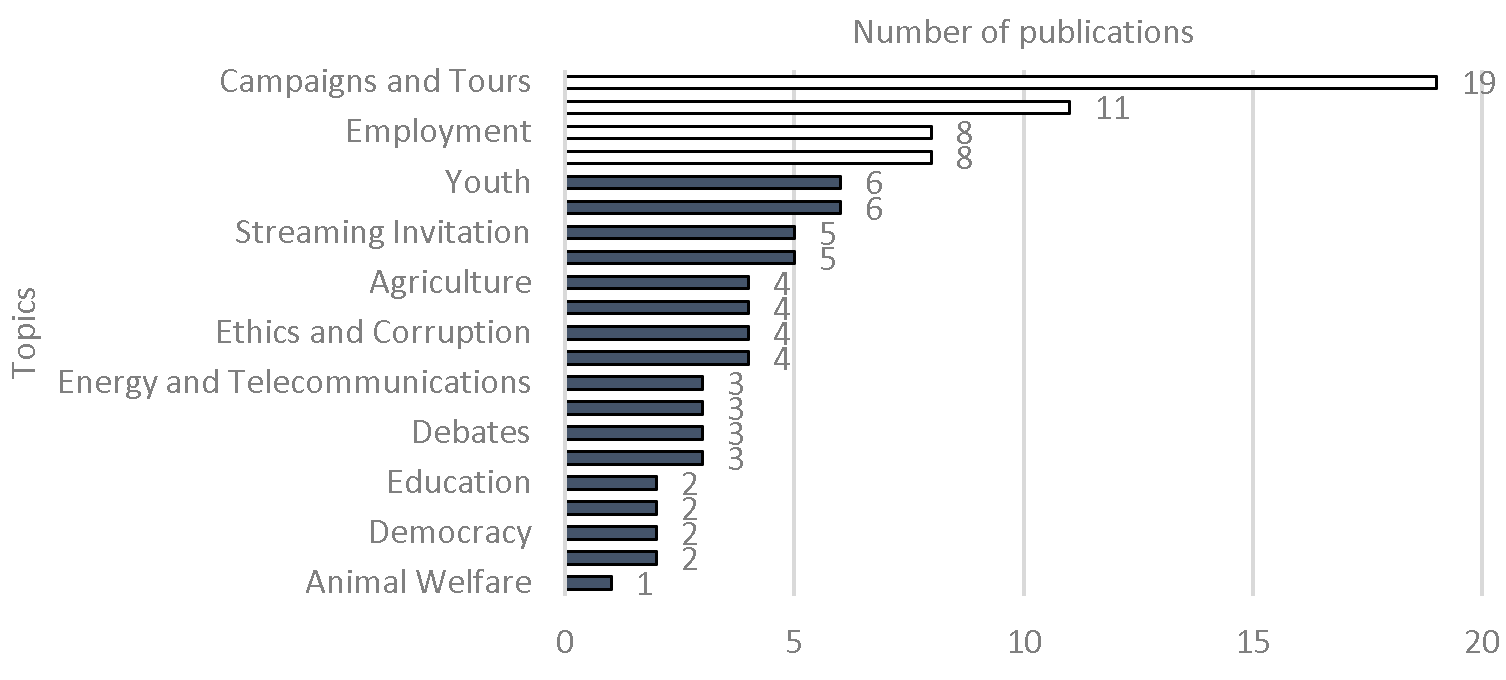
Figure 1. Number of posts in January, 2022
Figure 1 shows that the greatest number of shared contents (nineteen) were about campaign issues and tours, such as: tours to the provinces and some key localities, the attributes of the candidate and his wife, the ballot, contents related to the PLN ideology and others referring to support. The topic of economic reactivation received eleven posts. In third and fourth place, with six each, the topics related to human rights (health, vulnerable populations like the elderly, people with disabilities, and others) and employment. Figure 2 shows the trends identified as part of digital marketing in the campaign.
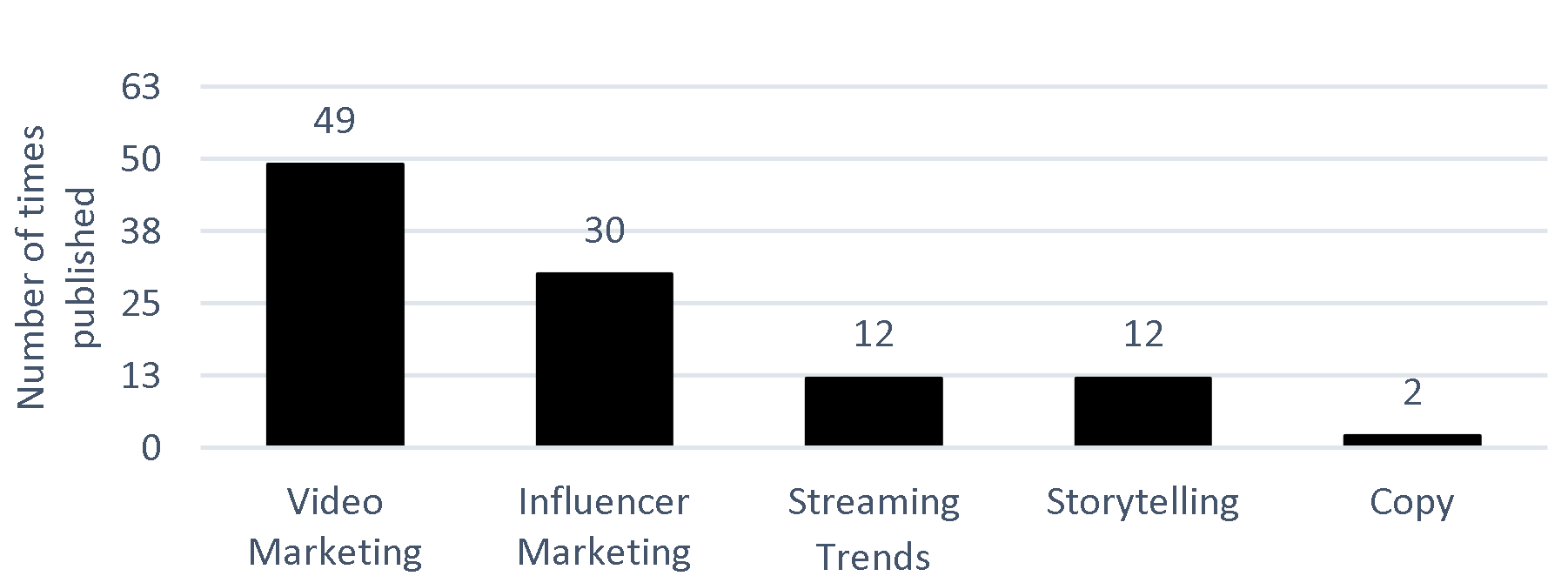
Figure 2. Digital marketing trends used in the campaign
Figure 2 shows the use of four digital marketing trends, which were represented with different visual formats. Video marketing stood out with 49 posts, followed by influencer marketing with 30. This influencer marketing trend includes all images or designs where the candidate Figueres and/or his wife Cinthya Berrocal are present, since both are considered influential figures in the political arena. Also, to a lesser extent, the influential images of other Costa Rican political, art, and cultural personalities were used. Also, in this trend, images of the party logo or the candidate's name stand out as influential brand image. The trend of live streaming received 12 posts in total, and most of these are shared from other sites, such as debates organized by the media. Some other live streams correspond to activities segmented by specific topics: youth, women, and climate change, for example. Finally, storytelling was used 12 times.
It should be noted that the use of Copy, only text without image, is not considered a current trend. However, this resource was used twice as a publication format in the Facebook social network.
All these trends were used as a tool to achieve some of the objectives of digital marketing. Then, in Figure 3, a greater number of posts linked to the objective of generating recognition of the candidate or his party ideals can be seen, (55.2% of the content). To this end, the use of storytelling videos and influencer marketing stands out.
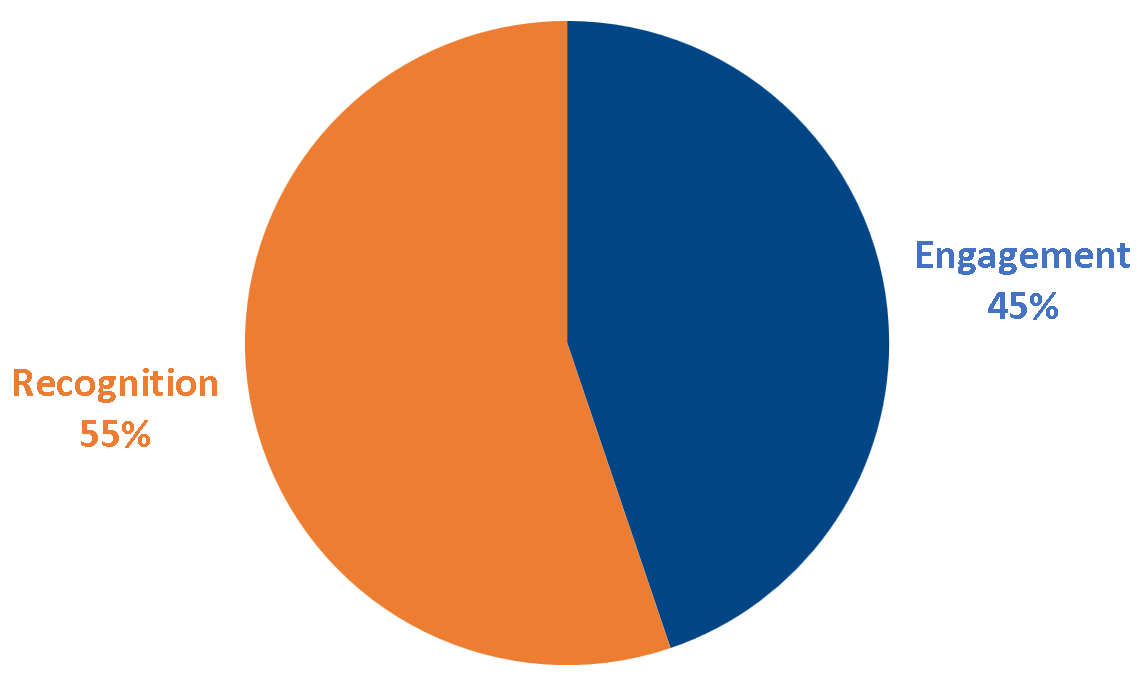
Figure 3. Posting goals
The objective of generating attraction, information, and recognition of the candidate and his proposals had 36 posts. Of these, the highest percentage (47%) was dedicated to recognition, using influencer marketing tactics (see Figure 4).
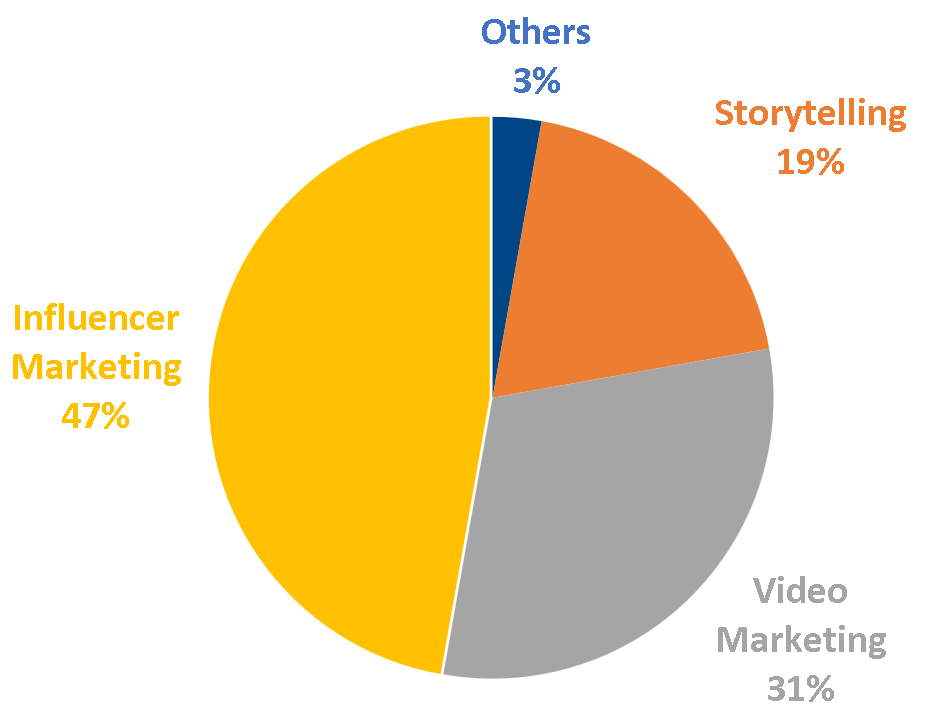
Figure 4. Trends used for recognition target
Posts that promoted the engagement or commitment of the voting public were 44.8%. In general, these posts were directed to more specific topics or populations. Here, the streaming done on campaign topics or for transmission of meetings with geographically defined communities stand out, as shown in Figure 5.
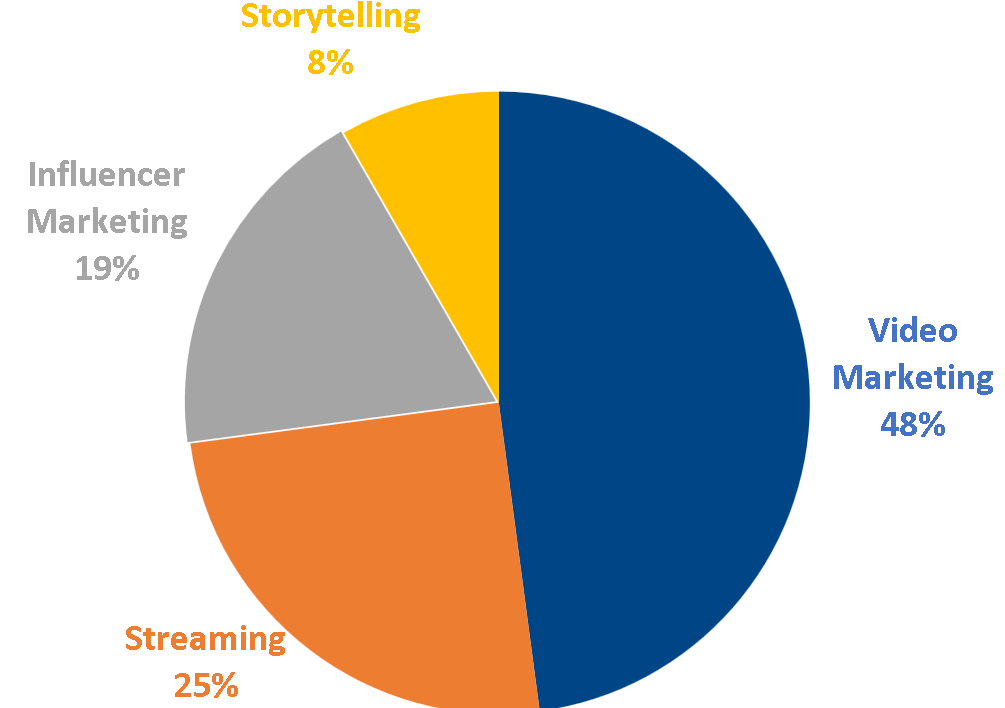
Figure 5. Trends used for engagement target
The video marketing trend to generate engagement was also the most used, followed by streaming. This demonstrates a higher degree of audience engagement by connecting to a live broadcast on a specific topic.
In Figure 6, a sample of the interaction with the posts of the month of January, 2022 in the profile of @Figuerescr is presented. A total of 149,410 reactions were counted, which included the social network nomenclature of: I like it, it makes me sad, I love it, and it makes me angry. The post that received the most reactions from the voting public was from January 26. It received 9,326 reactions and was related to the topic of employment; it highlights the image of the party and the invitation to vote.
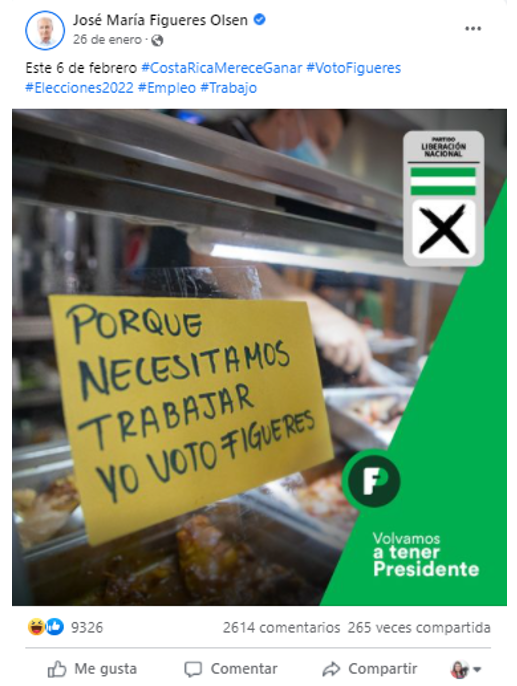
Figure 6. Post with the most reactions
Source: Facebook profile @Figuerescr, dated January 26, 2022.
In total, the posts made in January were shared 11,898 times. The most shared post was from January 6, 2022 (see figure 7). It was a marketing video that shows the candidate denying the myths of corruption that pointed to him and the PLN, which was shared 598 times.

Figure 7. Most shared post
Source: Facebook profile @Figuerescr, dated January 6, 2022.
The video with the most views was a story from January 19, 2022 (see figure 8), corresponding to a testimonial of the candidate on issues related to climate change, and totaled 446,000 views. However, this result could be due to international exposure, where the registered audience was not only Costa Ricans. Therefore, the findings clearly show the marketing tactics used by the PLN for the recognition of the candidate's brand with the electorate.
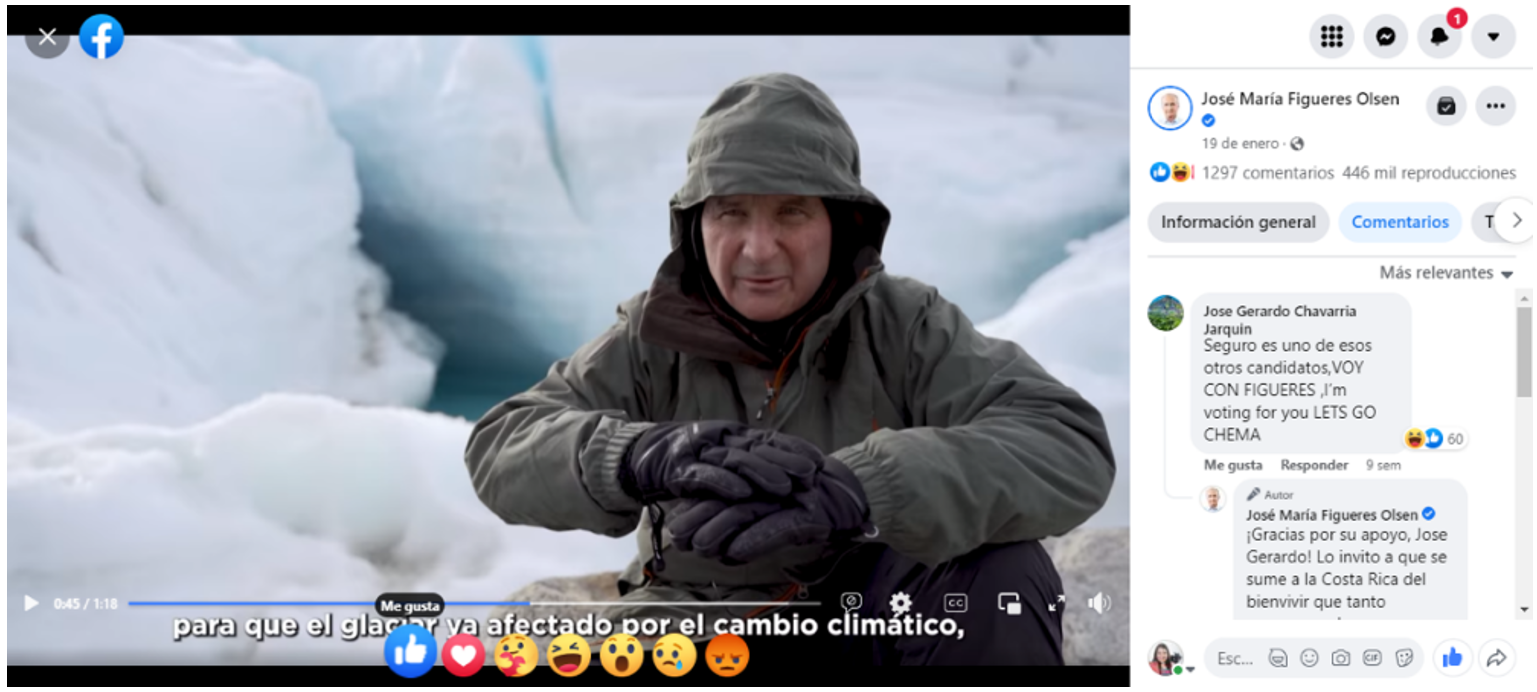
Figure 8. Post with the most reproductions
Source: Facebook profile @Figuerescr, dated January 6, 2022.
Then, we proceeded to identify the audience loyalty within the social network, as part of the second specific objective. To achieve it, we evaluated the posts that connected directly with the marketing objective corresponding to loyalty, we compiled the most relevant comments to the post that obtained the highest number of comments. They were categorized into: direct support to the candidate, with phrases such as: “Toda mi familia va a votar por Figueres.” Also, support for the party, with comments such as: “PLN gobernará nuevamente este país, y lo sacará del atolladero en que lo dejó el PAC.” In addition, negative comments, with mentions such as: “Ciegos guiando a ciegos.” Finally, comments not related to the party, the candidate, or the topic of the post in general.
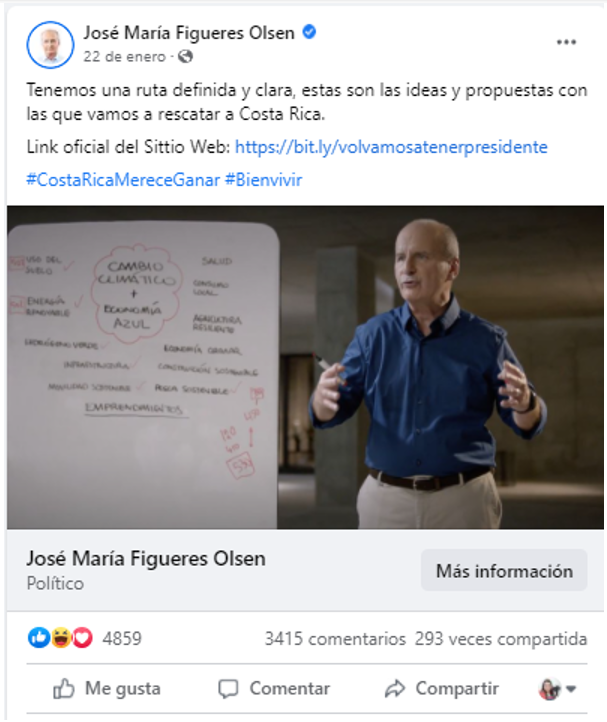
Figure 8. Most commented post
Source: Facebook profile @Figuerescr, dated January 22, 2022.
In the post of the previous image, the most relevant comments, according to the filters of the Facebook platform, were fifty. To evaluate the percentage of loyalty, the most relevant comments were analyzed and categorized according to their intention to support the candidate, the party, negative comments, and others unrelated to any of the above. The percentages of loyalty are summarized in Figure 9.
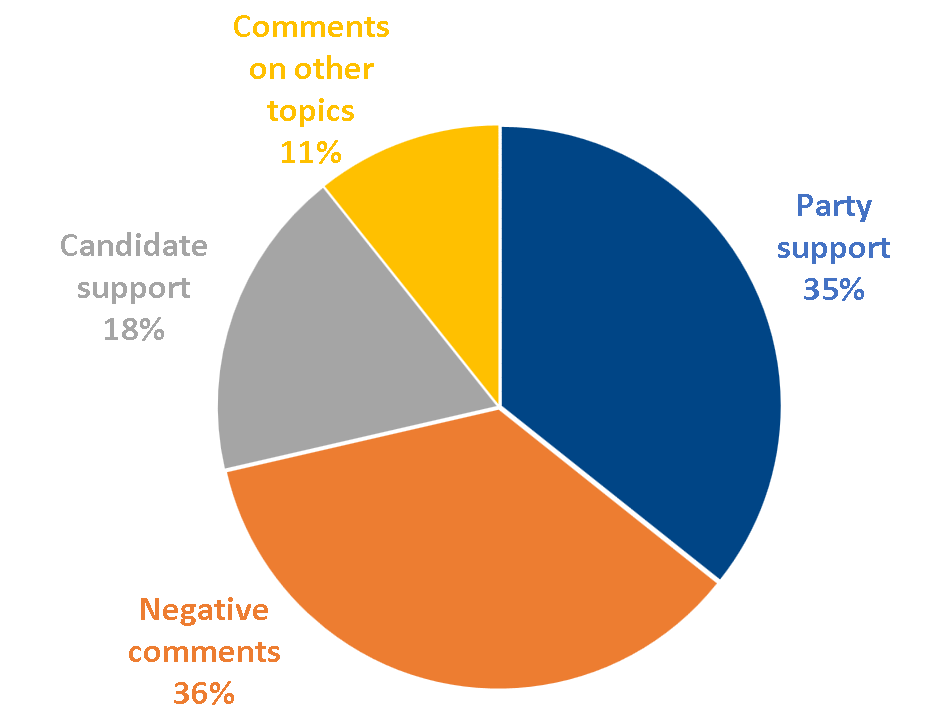
Figure 9. Intention to comment
The comments in support of the party are tied in first place with the negative comments, at 35.7%, while the comments directly supporting the candidate comprise 17.9%. Comments on other topics, unrelated to the post, reached 10.7%.
One of the actions taken by Figueres, in order to continue building the loyalty of the followers with positive comments, was to respond to many of these comments, showing his gratitude for the support provided and making them an invitation or call to action, which included a link to his website. This showed the option to register as a volunteer, to become a territorial or digital activist, as well as information on his government proposals and other information to involve his followers further with the party's movement.
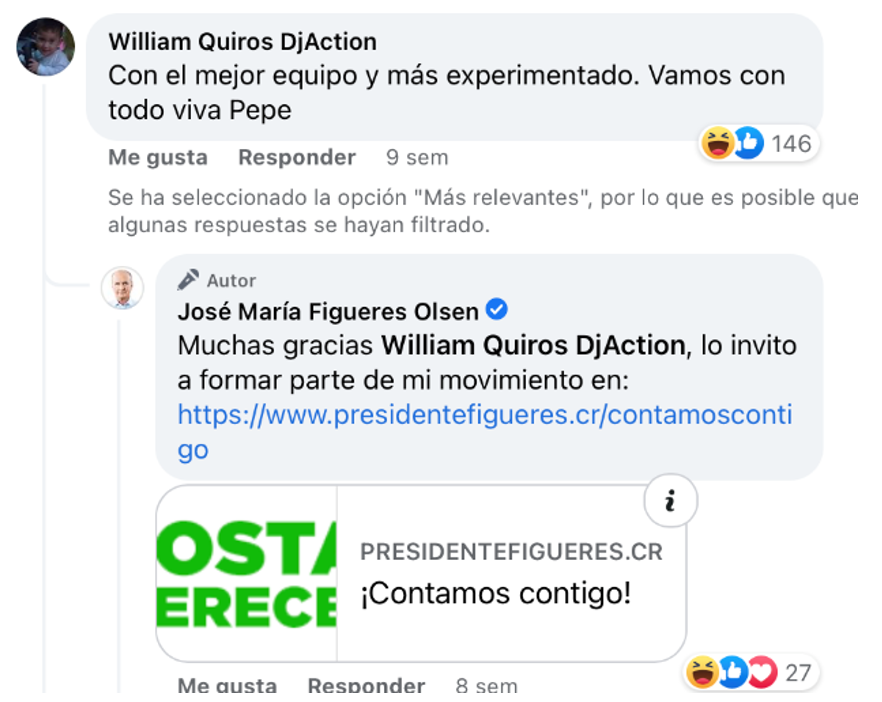
Figure 10. Automated response to comments
Source: Facebook profile @Figuerescr, January 22, 2022.
Then, we proceeded to the generation of Buyer Persona profiles that would support the candidate, in order to respond to the third specific objective, based on the analysis of the most relevant comments in the publications used in the electoral campaign within the Facebook social network, obtaining two profiles.
Buyer Persona 1
Flor Céspedes Acuña is a 53-year-old woman, a resident of Grecia, and a mother of 3 adult children. Flor is a housewife and lives with her only unmarried daughter, the youngest. Two of her children help her very little financially to support her household, but Flor receives a pension of 200,000 colones from her late husband, who used to be a bus driver.
Due to a hard childhood without financial stability, Flor had to leave her high school studies to look for a job in cleaning to support her single mother and four younger siblings. This explains a little of Flor's personality. She is very impressionable and not very interested in being informed and forming her own opinion on different topics. She relies 100% on what she sees on TV, news, generic WhatsApp messages, and Facebook news from pages of dubious sources.
For as long as Flor can remember, her family has supported the PLN. Since Flor was little, her grandmother used to tell her that, “There are two things that a person cannot change in his life: one is religion, and the other is his vote towards the political party.” Because of this, Flor has voted for the PLN all her life and, in a different way, has idealized the PLN as the only one that can govern the country intelligently.
Buyer Persona 2
William Quirós is a 55-year-old man, a resident of Cartago, married for the second time, and has three children, two of whom are university graduates, and a one-year-old baby girl. William has been working for seven years as a legal assistant in a law firm. He has a bachelor's degree as a notary and is the first university student in his family, though he has not been able to finish his degree. For the last three years, he has been playing music and karaoke at parties as a second occupation. His monthly income ranges from 850,000 to one million colones. His goal is to raise his children, support his wife, and maintain a stable income that would enable him to enjoy hobbies such as cycling and traveling. He is comfortable with his job as a legal advisor and would like to dedicate more time to his business.
José María Figueres is the best option for William because his proposal offers him a structured plan to strengthen entrepreneurship, simplify procedures, and help adjust social charges, credit conditions, and training to facilitate entrepreneurship. In addition, he believes that Figueres is the only candidate with a brilliant plan and a brilliant team capable of reactivating the economy and favoring entrepreneurs. In total, in January, 54,294 comments to the posts were registered.
DISCUSSION
From the analysis of the political digital marketing trends used in the profile of @Figuerescr in Facebook during January, 2022, several data resulted that allowed generating a comparative analysis of the effectiveness obtained between the brand strategy versus the votes achieved, as part of the fourth objective to be developed in the study.
According to the report number 8, of the Digital Communication Observatory of the Universidad Latina, of the total budget invested in the campaign of José María Figueres, which was around 415,000 dollars, almost 91% was invested in television and only about 19,000 dollars were allocated to digital advertising. Specifically, only 22.6% of the digital advertising budget was allocated to the social network Facebook (ULatina 2022). These figures show that the investment in this digital platform was very small and, therefore, there is no certainty that it was an element that significantly affected the voting in the first round.
The traditional political marketing strategy used by the candidate and the PLN, reflects a recognition of the electorate that has been supporting him, since 55% of the audience recognizes him as the choice in a possible presidential election. The traditional media used in the electoral campaign is what maintained the adequate level of recognition and influence to sell them the electoral products (47% direct influence and 31% video). However, when identifying the profile of the voter (Buyer Persona), we observed the support of the historical voter to the candidate and the party, that is to say, there was already a previous support to the electoral proposal.
Nevertheless, if the candidate and the PLN had conducted a detailed review of the digital strategy, they would have observed that 45% of the electorate was not committed to any candidate, where the direct influence of the PLN candidate represented only 19%, while techniques such as streaming (25%), video marketing (48%) and storytelling (8%), represented 81% of influence on the electorate; they did not support any candidate in particular. Additionally, José María Figueres Olsen had 36% of negative comments from the electorate, becoming a great challenge for the PLN candidate.
Also, the strategy used to engage the electorate was based on the use of posts that had as common characteristics: the approach of more specific issues of the candidate's government program, life stories of the candidate and the first lady, testimonies of community leaders and public figures who expressed their support. For example, the streaming of a conversation on entrepreneurship, aimed at a captive audience that had a genuine interest in the subject and showed commitment to the electoral proposal. However, the candidate did not manage to capture the support of the electorate (81%), since the comments on social networks reflect a rejection, both for José María Figueres Olsen and for the PLN.
(Fashami, Haghighinasab, Seyyedamiri, and Ahadi 2022) state that supportive comments and voting for the candidate and the party through public expression are important to achieve loyalty. However, (Samuel-Azran and Yarchi 2020; Samuel-Azran, Yarchi, and Wolfsfeld 2015) indicate that the use of social networks, such as Facebook, does not allow the deepening and application of inbound marketing tools, according to the requirements of the candidate and the voter during an electoral process. So, achieving the goal of voter loyalty is complex, since there is no good interaction with the voting public.
Therefore, candidates’ resort to the development of videos with a closed format in order to capture voter loyalty, under a traditional political strategy model, but do not allow any interaction, because they were previously recorded. So, any comment made by the audience does not reflect the current situation of the candidate, since the answers given by the profile were predesigned, not specific and, therefore, did not produce a dialogue between the candidate and his audience.
Also, the choice of tactics used in Facebook did not correspond to a previous study of the audience in social networks, as they did not consider the segmentation of the audience, nor characteristics of personality, interests, and trending topics. Nor was it perceived that the tactics chosen corresponded to a political digital marketing strategy, but seemed to be adaptations of tactics used in traditional media.
Additionally, the generation of Buyer Persona profiles showed that the contents of the publications did not consider the characteristics of their audience, since the electoral campaign focused on issues of economic recovery, human rights, and employment. Yet, the issues of women, sports, security, and poverty, which the audience demanded so much, had fewer posts. (Bagić Babac 2023) mentions that the correct use of data within a presidential campaign will allow the candidate to capture the strongest emotions of voters in social networks, but if not, the result will be adverse.
By avoiding direct interaction with the audience, the multiple data collection tools offered by the Facebook social network were wasted, considerably limiting the reach of the posts (Bramona 2019; Coronel 2019; Tien 2022; Valls 2022).
All of the above evidences the lack of knowledge, experience, and expertise in the electoral campaign of the PLN political candidate in January, 2022. This is evidenced in the results obtained in the second electoral round, as they failed to connect with the voting public.
CONCLUSIONS
The first electoral round of 2022 gave the victory to the candidate José Maria Figueres Olsen with 27.26% of the electoral roll, equivalent to 497,966 votes (TSE 2022), a little more than double the number of followers of the candidate in Facebook. This evidenced a successful result in the political strategy used in the electoral campaign through the candidate as a product, by means of posts and electoral proposals, disseminated in mass media, such as television.
However, the results of the second round were not as expected, since the PLN candidate did not achieve the results to obtain the victory. One of the factors was the lack of listening to the voting public through digital media, such as social networks, due to the lack of a clear digital marketing strategy (ULatina 2022).
Therefore, it is important to take into account, for a future digital marketing strategy, the following considerations:
- Design a digital strategy according to the context of the electoral process, with the objective of attracting the undecided public and reinforcing voter commitment of the one that provides support to the candidate.
- Establish tactics aimed at the candidate's recognition with the context, and provide a unique and fresh offer of electoral products.
- Design a storytelling strategy adjusted to the electoral moment, so that the audience gets to know the candidate according to their needs.
- The messages of the posts must consider the use of a multichannel strategy in social networks.
- Establish a plan for listening and active response of the audience by the candidate and the party.
- Advice, consulting, training, coaching, and support of digital tools for both the political party, candidate and collaborators, to allow audience segmentation and promotion of direct dialogue with the electorate.
- Identification of relevant topics for the electorate, through active listening in social networks, allowing the design of posts according to the requirements of the environment.
- Establish strategies for dynamic, constant, and rapid interaction between the candidate and the electorate, through digital media, such as social networks, instant messaging, or other technological means, in order to achieve a greater rapprochement between the candidate and the voter.
- Establish an appropriate strategy for electoral products based on the comments obtained in social networks, in order to adapt and raise awareness of the candidate's offer.
- Implement technologies and alternative digital channels, as part of the digital strategy, to capture data and generate metrics of behaviors and trends of the electorate.
- Design agile inbound marketing tactics according to the context, in order to maintain voter loyalty.
- Implement a strategy to know your voter, in order to generate more Buyer Persona profiles to better understand the audience.
All the findings of the study lead to practical implications that suggest a change in the focus of the perspective on the use of technologies in political digital strategies. Therefore, the result of this work will become a strategic instrument to ensure the success or failure of the future rulers of a given society. Consequently, the study will serve as an input for the interested institutions, as a guide in the impulse and leadership in the future electoral processes, and to understand the role that technology plays in the voter's decision.
The implications from the theoretical perspective contemplate the development of research works in the academy. They include additional elements in the existing relationship between political digital marketing processes, the use and role of technology in electoral processes, and the resilient role of regulatory institutions in the digital era. For this, the future lines of research are varied, given that the subject of study is very recent, broad, and with infinite ramifications.
REFERENCES
Akre, V., A. Rajan, J. Ahamed, A. Al Amri, and S. Al Daisi. 2019. "Smart digital marketing of financial services to millennial generation using emerging technological tools and buyer persona." 2019 Sixth HCT Information Technology Trends (ITT): 120-125. https://doi.org/10.1109/ITT48889.2019.9075106.
Bagić Babac, M. 2023. "Emotional showdown on social media: analyzing user reactions to the 2016 US presidential campaign." Global Knowledge, Memory and Communication ahead-of-print (ahead-of-print). https://doi.org/10.1108/GKMC-02-2023-0060.
Bigi, A., E. Treen, and A. Bal. 2016. "How customer and product orientations shape political brands." Journal of Product & Brand Management 25 (4): 365-372. https://doi.org/10.1108/JPBM-07-2015-0935.
Bramona, A. 2019. "Las 7 herramientas top que integra Hubspot." Amara. https://amara-marketing.com/blog-turismo/herramientas-software-marketing-hubspot/.
Brown, A. J. 2020. "“Should I stay or should I leave?”: Exploring (dis) continued Facebook use after the Cambridge Analytica scandal." Social media+ society 6 (1): 2056305120913884. https://doi.org/10.1177/2056305120913884.
CIDOB. 2020. "José María Figueres Olsen." CIDOB. https://www.cidob.org/biografias_lideres_politicos/america_central_y_caribe/costa_rica/jose_maria_figueres_olsen.
Conti, E., F. Camillo, and T. Pencarelli. 2023. "The impact of digitalization on marketing activities in manufacturing companies." The TQM Journal 35 (9): 59-82. https://doi.org/10.1108/TQM-11-2022-0329.
Coronel, M. . 2019. "Medición de marketing digital: herramientas indispensables." Interius. https://blog.interius.com.mx/medicion-de-marketing-herramientas-indispensables.
Creswell, J., and C. Poth. 2016. Qualitative inquiry and research design: Choosing among five approaches. Sage publications.
De Veirman, M., V. Cauberghe, and L. Hudders. 2017. "Marketing through Instagram influencers: the impact of number of followers and product divergence on brand attitude." International journal of advertising 36 (5): 798-828. https://doi.org/10.1080/02650487.2017.1348035.
Donio', J., P. Massari, and G. Passiante. 2006. "Customer satisfaction and loyalty in a digital environment: an empirical test." Journal of Consumer Marketing 23 (7): 445-457. https://doi.org/10.1108/07363760610712993.
Dunakhe, K., and C. Panse. 2022. "Impact of digital marketing – a bibliometric review." International Journal of Innovation Science 14 (3/4): 506-518. https://doi.org/10.1108/IJIS-11-2020-0263.
Fashami, R., M. Haghighinasab, N. Seyyedamiri, and P. Ahadi. 2022. "From Digital Content Marketing Toward Brand Engagement." The Emerald Handbook of Multi-Stakeholder Communication: 281-305. https://doi.org/10.1108/978-1-80071-897-520221023.
Figueres, J. M. . 2022. "Conoce a Jose María." Jose María Figueres. https://www.figueres.cr/es-cr/ConoceAJoseMaria.
Flores-Rueda, I. C., J. M. Espinosa-Delgado, and M. P. Torres-Rivera. 2021. Aplicaciones de herramientas de mercadotecnia. Vol. 1. San Luis Potosí: Universidad Autónoma de San Luis Potosí.
Güell, A. 1973. Hipótesis y variables. Vol. 1.Metodología de las ciencias sociales: R. Boudon & P. Lazarsfeld.
Guven, H. 2020. "Industry 4.0 and Marketing 4.0: In Perspective of Digitalization and E-Commerce." Agile Business Leadership Methods for Industry 4.0: 25-46. https://doi.org/10.1108/978-1-80043-380-920201003.
Habib, S., N. Hamadneh, and A. Hassan. 2022. "The Relationship between Digital Marketing, Customer Engagement, and Purchase Intention via OTT Platforms." Journal of Mathematics 2022: 5327626. https://doi.org/10.1155/2022/5327626.
Hall, S. 2022. "El crecimiento actual de las tendencias digitales supera ya a los datos pre pandemia." We Are Social. https://wearesocial.com/es/blog/2022/01/digital-report-2022-el-informe-sobre-las-tendencias-digitales-redes-sociales-y-mobile/#:~:text=Digital%202022%20muestra%20que%20la,a%C3%B1o%3A%20192%20millones%20de%20personas.
He, A., Y. Cai, L. Cai, and Y. Zhang. 2021. "Conversation, storytelling, or consumer interaction and participation? The impact of brand-owned social media content marketing on consumers’ brand perceptions and attitudes." Journal of Research in Interactive Marketing 15 (3): 419-440. https://doi.org/10.1108/JRIM-08-2019-0128.
Jadhav, G., S. Gaikwad, and D. Bapat. 2023. "A systematic literature review: digital marketing and its impact on SMEs." Journal of Indian Business Research 15 (1): 76-91. https://doi.org/10.1108/JIBR-05-2022-0129.
Jami-Pour, M., and Z. Karimi. 2023. "An integrated framework of digital content marketing implementation: an exploration of antecedents, processes, and consequences." Kybernetes ahead-of-print (ahead-of-print). https://doi.org/10.1108/K-02-2023-0178.
Karen, K., and I. Zai. 2022. "Analyzing the effects of digital marketing on brand awareness among internet users." MBR (Management and Business Review) 6 (2): 153‐167-153‐167. https://doi.org/10.21067/mbr.v6i2.7298.
Lehnert, K., S. Goupil, and P. Brand. 2021. "Content and the customer: inbound ad strategies gain traction." Journal of Business Strategy 42 (1): 3-12. https://doi.org/10.1108/JBS-12-2019-0243.
Leung, T., Y. Hui, C. Luk, D. Chiu, and K. Ho. 2023. "Evaluating Facebook as aids for learning Japanese: learners' perspectives." Library Hi Tech 41 (5): 1456-1475. https://doi.org/10.1108/LHT-11-2021-0400.
Marengo, D., C. Montag, C. Sindermann, J. Elhai, and M. Settanni. 2021. "Examining the links between active Facebook use, received likes, self-esteem and happiness: A study using objective social media data." Telematics and Informatics 58: 101523. https://doi.org/10.1016/j.tele.2020.101523.
McMullan, R., and A. Gilmore. 2008. "Customer loyalty: an empirical study." European Journal of Marketing 42 (9/10): 1084-1094. https://doi.org/10.1108/03090560810891154.
Moriuchi, E. 2021. "Inbound Marketing and Analytics." Cross-Cultural Social Media Marketing: Bridging Across Cultural Differences: 17-28. https://doi.org/10.1108/978-1-83867-175-420211003.
Morris, N. 2009. "Understanding digital marketing: marketing strategies for engaging the digital generation." Journal of Direct, Data and Digital Marketing Practice 10 (4): 384-387. https://doi.org/10.1057/dddmp.2009.7.
Mulier, L., H. Slabbinck, and I. Vermeir. 2021. "This way up: The effectiveness of mobile vertical video marketing." Journal of Interactive Marketing 55 (1): 1-15. https://doi.org/10.1016/j.intmar.2020.12.002.
Naeem, M. 2019. "Uncovering the role of social media and cross-platform applications as tools for knowledge sharing." VINE Journal of Information and Knowledge Management Systems 49 (3): 257-276. https://doi.org/10.1108/VJIKMS-01-2019-0001.
Nalbant, K., and S. Aydin. 2023. "Development and transformation in digital marketing and branding with artificial intelligence and digital technologies dynamics in the Metaverse universe." Journal of Metaverse 3 (1): 9-18. https://doi.org/10.57019/jmv.1148015.
Needham, C., and G. Smith. 2015. "Introduction: political branding." Journal of Political Marketing 14 (1-2): 1-6. https://doi.org/10.1080/15377857.2014.990828.
Nguyen, T., D. Le, S. Quach, P. Thaichon, and V. Ratten. 2021. "The Current Trends and Future Direction of Digital and Relationship Marketing: A Business Perspective." Developing Digital Marketing: 191-200. https://doi.org/10.1108/978-1-80071-348-220211011.
O’Shaughnessy, N. 2001. "The marketing of political marketing." European Journal of Marketing 35 (9/10): 1047-1057. https://doi.org/10.1108/03090560110401956.
Osuagwu, L. 2008. "Political marketing: conceptualisation, dimensions and research agenda." Marketing Intelligence & Planning 26 (7): 793-810. https://doi.org/10.1108/02634500810916726.
Pájaro-Huertas, D. 2002. "La formulación de hipótesis." 15.
Pereira-Correia, P., I. García-Medina, Z. González-Romo, and R. Contreras-Espinosa. 2014. "The importance of Facebook as an online social networking tool for companies." International Journal of Accounting & Information Management 22 (4): 295-320. https://doi.org/10.1108/IJAIM-08-2013-0050.
Piñeiro-Otero, T., and M. R. Xabier. 2020. "Para comprender la política digial: Principios y Acciones." Vivat Academia (152): 19-48. https://doi.org/1575-2844.
Pinheiro-Tiago, M., and J. Cristóvão-Veríssimo. 2014. "Digital marketing and social media: Why bother?" Business horizons 57 (6): 703-708. https://doi.org/10.1016/j.bushor.2014.07.002.
PLN. 2019. "Carta Fundamental." Partido Liberación Nacional. https://www.plncr.org/.
Rialti, R., Z. Kvítková, and T. Makovník. 2023. "Online Reputation Management in Tourism: Emerging Themes, Theories, Problems, and Solutions." Online Reputation Management in Destination and Hospitality: 3-25. https://doi.org/10.1108/978-1-80382-375-120231001.
Ribeiro, B., G. Oliveira, A. Laranjeira, and J. Arrais. 2017. "Deep learning in digital marketing: brand detection and emotion recognition." International Journal of Machine Intelligence and Sensory Signal Processing 2 (1): 32-50. https://doi.org/10.1504/IJMISSP.2017.088173.
Ridge-Newman, A., and M. Mitchell. 2016. "Digital Political Marketing." Political Marketing and the 2015 UK General Election: 99-116. https://doi.org/10.1057/978-1-137-58440-3_7.
Rodríguez-Torrico, P., S. San-Martín, and R. San José Cabezudo. 2020. "The role of omnichannel tendency in digital information processing." Online Information Review 44 (7): 1347-1367. https://doi.org/10.1108/OIR-08-2019-0272.
Roldán, P. N. 2019. "Muestreo estratificado." Economiapedia. https://economipedia.com/definiciones/muestreo-estratificado.html.
Salim, M., E. Rosdian, and R. Marta. 2021. "Digital Marketing Communication to Increase CRSL Store Brand Awareness." Medium 9 (2): 242-262. https://doi.org/10.25299/medium.2021.vol9(2).8800.
Samuel-Azran, T., and M. Yarchi. 2020. "Women candidates are unrewarded for “masculine” campaigning: Facebook campaigning during Israel's 2018 municipal elections." Online Information Review 44 (6): 1199-1216. https://doi.org/10.1108/OIR-07-2019-0228.
Samuel-Azran, T., M. Yarchi, and G. Wolfsfeld. 2015. "Aristotelian rhetoric and Facebook success in Israel’s 2013 election campaign." Online Information Review 39 (2): 149-162. https://doi.org/10.1108/OIR-11-2014-0279.
Santos, D. 2022. "Tipos de investigación de mercados y sus características." HubSpot. https://blog.hubspot.es/marketing/tipos-de-investigacion-de-mercados.
Tapia, M. 2021. "Análisis de la conducta electoral de los votantes: ¿Cómo influyen las redes sociales en las campañas políticas?". Universidad de Chile. https://www.uchile.cl/noticias/182049/elecciones-cuanto-influyen-las-redes-sociales-en-las-campanas-.
Tien, S. 2022. "10 herramientas de análisis de redes sociales que harán los cálculos por ti [versión 2023]." Hootsuite. https://blog.hootsuite.com/es/analisis-de-redes-sociales/.
TSE. 2022. "Resultados Nacionales 2022: Resultados Provisionales." Tribunal Supremo de Elecciones. https://www.tse.go.cr/vr2022/#/presidenciales.
ULatina. 2022. "Reporte #8 del 15 al 21 de enero de 2022." Observatorio de Comunicación Digital. https://www.ulatina.ac.cr/area-de-investigacion/grupos-de-investigacion/observatorio/proceso-electoral-2022/reporte-8.
Valls, C. . 2022. "La importancia de las métricas: cómo elegir los KPI correctos." Holded. https://www.holded.com/es/blog/que-son-kpi.
Visvizi, A., O. Troisi, M. Grimaldi, and F. Loia. 2022. "Think human, act digital: activating data-driven orientation in innovative start-ups." European Journal of Innovation Management 25 (6): 452-478. https://doi.org/10.1108/EJIM-04-2021-0206.
Westreicher, G. 2020. "Hipótesis." Economipedia.com. https://economipedia.com/definiciones/hipotesis.html.
Xu, H., Y. Liu, B. Song, X. Yin, and X. Li. 2023. "Local social network structure and promotion effectiveness in social commerce." Information Technology & People ahead-of-print (ahead-of-print). https://doi.org/10.1108/ITP-10-2021-0737.
Zekos, G. 2003. "MNEs, globalisation and digital economy: legal and economic aspects." Managerial Law 45 (1/2): 1-296. https://doi.org/10.1108/03090550310770875.